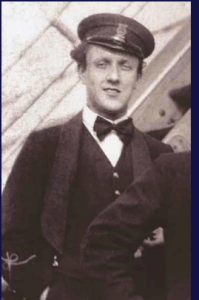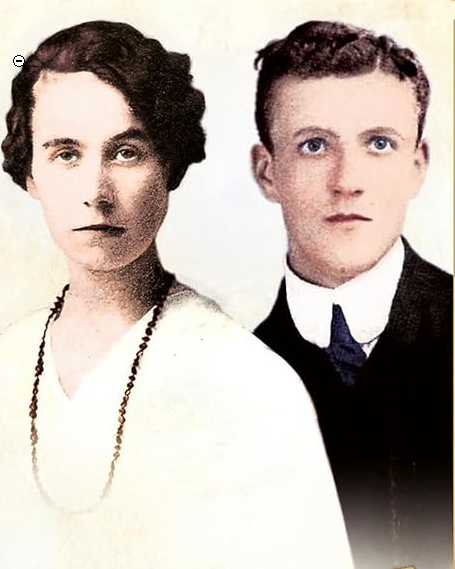A presentation by CHRISTOPHER WARD
following the Annual General Meeting on 9th May 2025
On the 14th April 1912 The White Star Liner ‘The Titanic’ struck an iceberg on her maiden voyage and sank in the North Atlantic, 400 miles off the coast of Nova Scotia. Of the 1,497 men, women and children who were swept into the sea over a thousand were never seen again. One of whom was 21 year old Jock Hume, the grandfather of Christopher Ward. Jock was not just a passenger on the liner but a gifted violinist, a member of the eight-piece band that so famously continued playing as the ship slowly sank beneath the waves.

This opener set the scene for Christopher’s excellent presentation of the tragedy, the fake-news, the salvage attempts and the aftermath, using illustrations of film and newspaper clippings throughout that reflected his own skills as a former journalist and news editor. An added dimension was to hear of the effect of this tragedy on the families left behind from a direct descendant. This was in an age when class determined so many aspects of people’s lives including death. One example being that Jock’s pay as a bandsman stopped the exact minute that the ship sunk beneath the waves.
We then learned of many examples of the organisational responses to the disaster. The White Star Line initially was reluctant to acknowledge the extent of the tragedy leading to newspaper headlines giving misinformation. It was not until four days afterwards, following more accurate reports from others, that the White Star Line was made to take some accountability. They finally sent the Mackay-Bennett (the ‘ship of death’) to recover bodies reported to be floating in the sea and return them to Halifax, Nova Scotia. However many management failures were noted. There were inadequate supplies of lifeboats on the Titanic when she set sail. The Mackay-Bennett had a scarcity of coffins to store the bodies found. There was not enough embalming fluid and many bodies were stored in ice on deck or were ‘buried’ at sea. Sadly it was class inevitably that determined this outcome. Those deemed to be of working class were more likely to be buried at sea than those whose name or clothing reflected someone of prestige. Christopher drew parallels with disasters in contemporary corporate life that we all recognised. However we noted that the Public Enquiry set up soon after the event published its findings just two weeks later!
The system created for collating unidentified bodies was commendable and has been used since. An identity number was given to each body and any belongings found with it. Later, photographs of each corpse aided further identification but sadly there are still 40 unclaimed bodies in the Fairview Lawn Cemetery in Halifax, Nova Scotia where Jock is buried. There is also a commemorative plaque in his home town of Dumfries to him and another local lad who was also serving on the Titanic.
With so many lives lost in the disaster why were members of the band singled out for recognition of their bravery? I think the answer is in the determination of members of the band to continue to play music on the sinking ship to lift the spirits of everyone until they too were engulfed by waves.

Sandra Y Gann 10/4/25
